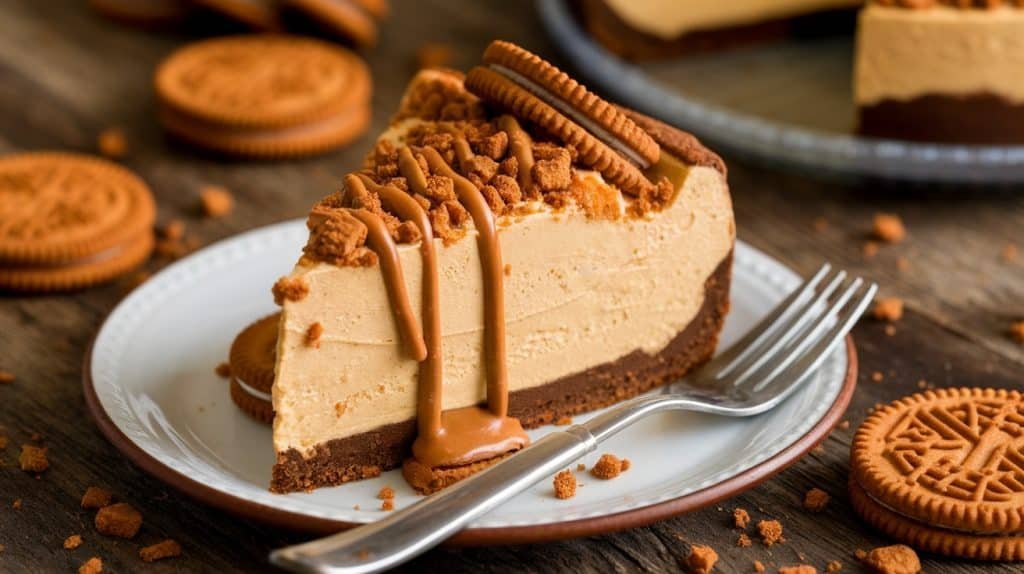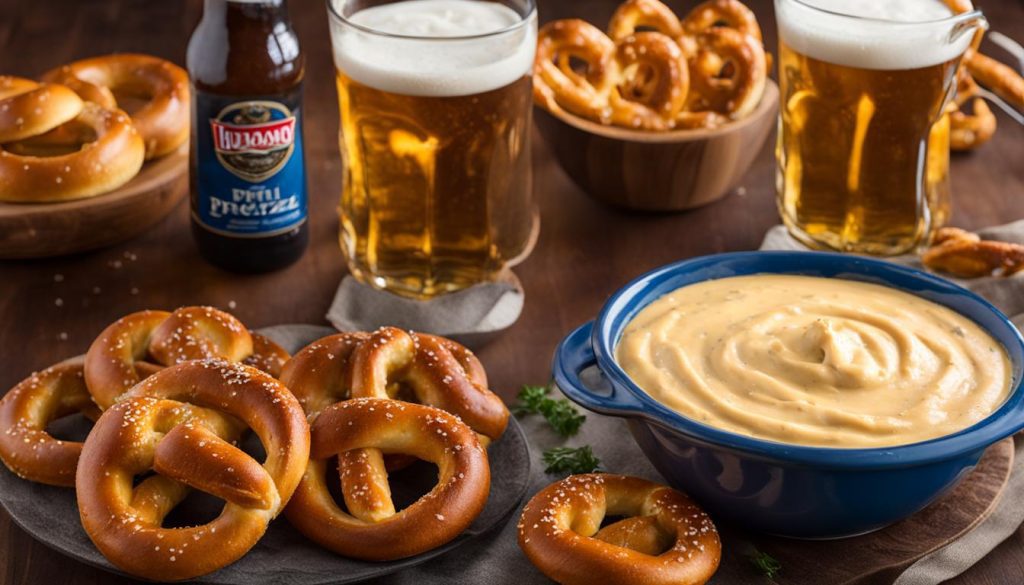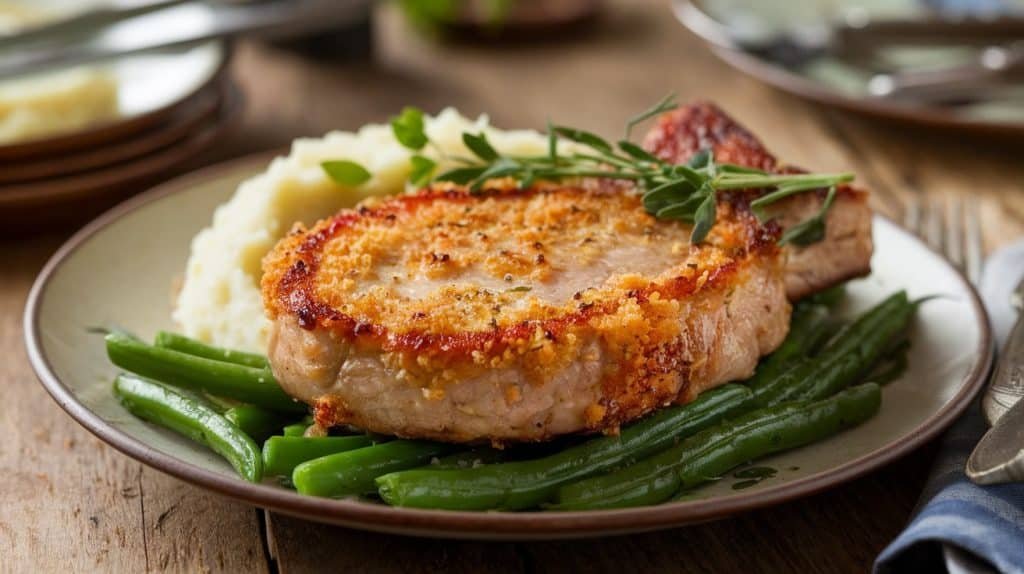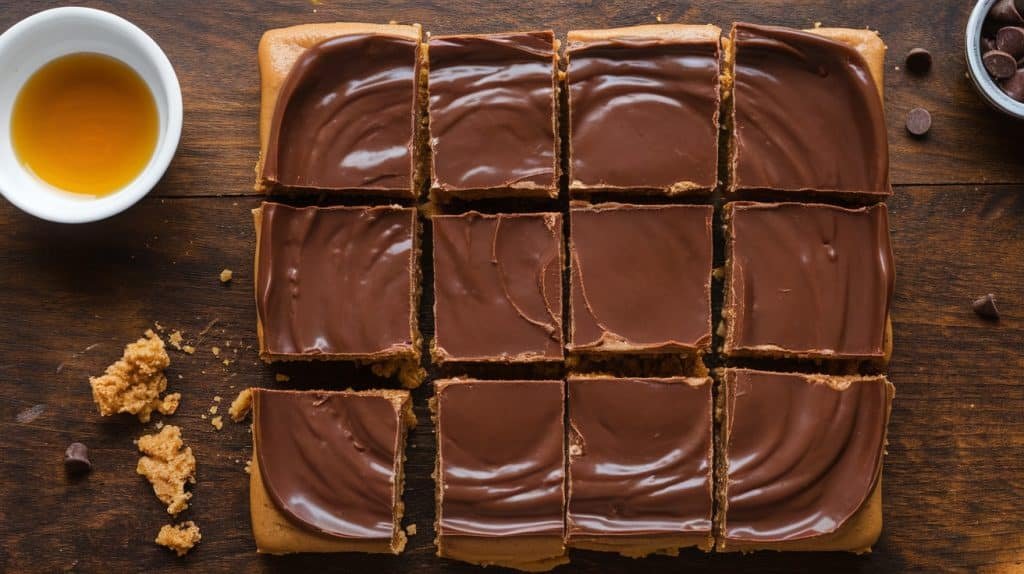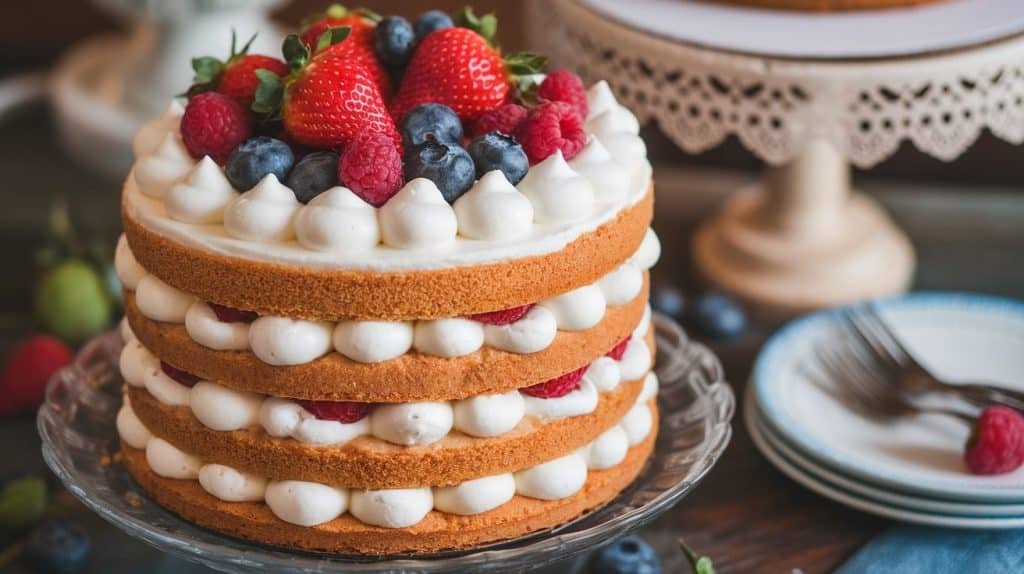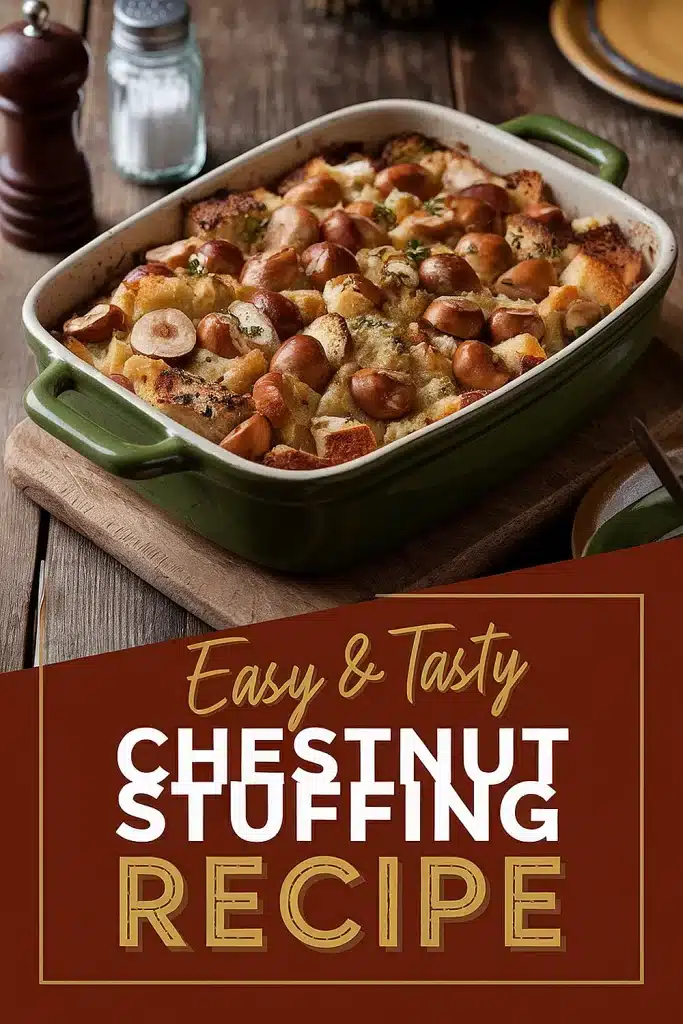
Thanksgiving is coming, and I feel a special warmth. My classic chestnut stuffing is a big part of our family’s tradition. It’s a comforting dish that goes great with turkey and adds a special touch with chestnuts. This recipe is a favorite for many families during the holidays. It combines savory flavors that make your Thanksgiving dinner even better. Let’s make this festive meal together!
Why I Love Chestnut Stuffing for Thanksgiving
Every Thanksgiving, my family comes together. Chestnut stuffing is a big part of our feast. It’s special because of the personal connection I have with it.
The taste of chestnuts mixes well with other ingredients. It makes a delicious mix of flavors. Each bite reminds me of happy family times.
The sweetness of chestnuts goes well with sage and onion. It makes their flavors even better. This dish is full of love and memories.
It’s not just about the taste. It’s about the love and bonding it brings. We make it together, passing down recipes to future generations.
There are many reasons chestnut stuffing is key to Thanksgiving. Making it is a family effort. It brings us closer.
The smell of it in the house is amazing. It reminds us of the love in our meals. Chestnut stuffing makes Thanksgiving special for me.
Essential Ingredients for Chestnut Stuffing
Choosing the right ingredients is key for a great chestnut stuffing. These parts make your dish a hit at Thanksgiving.
Chestnuts for Stuffing: What to Choose
It’s important to pick the best chestnuts for stuffing. Look for fresh ones in season. Canned or vacuum-sealed ones are good too, for ease and taste.
For fresh chestnuts, check if the shells are shiny and without bruises. They should feel firm. If using canned or sealed ones, make sure they don’t have preservatives that can change the taste.
Other Key Ingredients
There are more ingredients that go well with chestnuts. Here’s what I usually add:
- Stale bread cubes, which are perfect for stuffing.
- Onions, finely chopped, for sweetness and depth.
- Celery, for crunch and fresh taste.
- Fresh herbs like thyme and rosemary, for a great smell.
- Vegetable or chicken broth, for moisture and flavor.
Using top-notch ingredients for chestnut stuffing makes every bite tasty and fulfilling.
Step-by-Step Guide to Prepare Chestnut Stuffing
Preparing chestnut stuffing is fun, especially during the holidays. This guide will show you how to make it easily. We’ll cover from roasting chestnuts to mixing the stuffing ingredients.
Preparing the Chestnuts
First, heat your oven to 400°F (200°C). Score a small “X” on each chestnut’s flat side. This helps steam escape while roasting.
Put them on a baking sheet and roast for 20-25 minutes. They should look golden and the skins should peel back. Let them cool a bit, then peel them. Discard the shells and any tough skins.
Mixing the Ingredients
Melt butter in a large pan over medium heat. Add diced onions, celery, and garlic. Cook until they’re soft.
Add fresh herbs like thyme and sage. They make the stuffing taste better. Then, mix in cubed bread, roasted chestnuts, salt, and pepper.
To keep the stuffing moist, add broth slowly. This helps everything stick together. You can also add more herbs or spices to taste.
How to Cook Chestnut Stuffing Perfectly
Cooking chestnut stuffing is fun, but the method matters a lot. You might wonder if to use the oven or slow cooker. Each way has its own good points, helping you get the stuffing just right.
Cooking Methods: Oven vs. Slow Cooker
The oven makes the top crispy and adds flavor. I like using the oven if I have time. Heat it to 375°F and bake for 30 minutes covered, then 15-20 minutes without a cover for a golden top.
The slow cooker is great for busy days. It lets you make the stuffing ahead of time. Cook it on low for 4 hours for a moist stuffing, but it won’t be as crispy as oven-baked.
Temperature and Timing Recommendations
Getting the stuffing just right is key. Here’s a quick guide for both ways:
| Cooking Method | Temperature | Cooking Time |
|---|---|---|
| Oven | 375°F | 30 mins covered, 15-20 mins uncovered |
| Slow Cooker | Low | 4 hours |
No matter how you cook it, aim for perfection. Make sure the stuffing is 165°F inside. This way, we can all enjoy it at our holiday meals.
Tips for Making the Perfect Chestnut Stuffing
Making the perfect chestnut stuffing needs careful attention. I have some tips that help my dish stand out every year.
Taste testing is key. I season a small part of the stuffing first. This helps me get the flavors right, so nothing is too strong.
Don’t overmix the stuffing. Mix gently to keep it light and fluffy. Overmixing makes it gummy, which is bad.
Try adding nuts or dried fruits for a twist. They add fun textures and tastes, making the stuffing even better.
Getting the moisture right is also important. The stuffing should be moist but not wet. Adding broth slowly helps control the texture, making it a smart tip.
Serving Suggestions for Chestnut Stuffing
Being creative with chestnut stuffing can make it a holiday table star. Pairing it with Thanksgiving dishes makes the meal even better. Try it with turkey, cranberry sauce, and more.
Pairing with Traditional Thanksgiving Dishes
For a complete meal, serve chestnut stuffing with:
- Roasted turkey, the main Thanksgiving dish.
- Cranberry sauce, for a sweet and tangy taste.
- Green bean casserole, for creamy texture.
- Mashed potatoes, for a flavor mix.
- Gravy, to make the meal richer.
Garnishing Ideas to Elevate Your Plate
Adding garnishes can make your stuffing look great. Here are some ideas:
- Fresh herbs like parsley or thyme add color and taste.
- Cranberries add a festive touch and sweetness.
- Chopped nuts like pecans or walnuts give a nice crunch.
- A drizzle of olive oil or melted butter looks and tastes good.
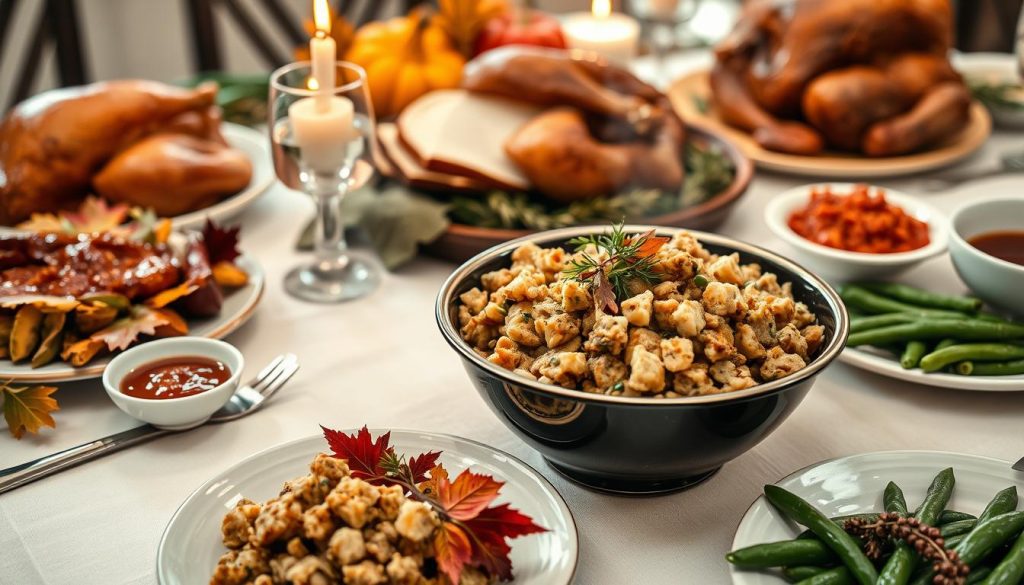
These ideas make sharing chestnut stuffing joyful. They also make sure every plate looks as good as it tastes.
| Dish | Flavor Profile | Complementary Element |
|---|---|---|
| Roasted Turkey | Savory and succulent | Rich gravy |
| Cranberry Sauce | Sweet and tart | Fresh zest |
| Green Bean Casserole | Creamy and earthy | Crispy onions |
| Mashed Potatoes | Buttery and comforting | Salt and pepper |
Storing and Reheating Leftover Chestnut Stuffing
After Thanksgiving, I often have leftover chestnut stuffing. It’s important to store it right to keep its taste and texture good. Put the stuffing in an airtight container. This keeps it fresh in the fridge for up to four days.
Freezing is also a good choice for longer storage. Divide it into smaller containers for easy reheating later.
Let the stuffing cool down before storing it. This stops it from getting soggy. To reheat, the oven is best. It makes the stuffing crispy and warm.
Preheat the oven to 350°F (175°C). Put the stuffing in a dish and cover it with foil for 20 minutes. Then, remove the foil and bake for another 10 minutes for a golden crust.
The microwave is quicker but not as good. Use a microwave-safe dish and heat in 30-second bursts, stirring between each. This way, you can enjoy the stuffing again, just like the first time.
| Storage Method | Duration | Reheating Tips |
|---|---|---|
| Refrigerator | Up to 4 days | Cover and reheat at 350°F for 20 minutes |
| Freezer | Up to 3 months | Thaw in fridge overnight before reheating |
| Microwave | 1-2 days (after refrigerated) | Heat in 30-second intervals, stirring in between |
Variations on the Classic Chestnut Stuffing Recipe
I love trying new things with my chestnut stuffing recipe. Adding Italian sausage is a favorite of mine. It makes the stuffing taste richer and more exciting.
Seasonal veggies like butternut squash add sweetness and color. They make the dish more interesting and vibrant. This way, I can make the stuffing just right for my family.
Don’t be afraid to try different spices. Smoked paprika, thyme, or cranberries can make a big difference. It’s fun to make the stuffing your own. This way, chestnut stuffing becomes a special dish for every year!

